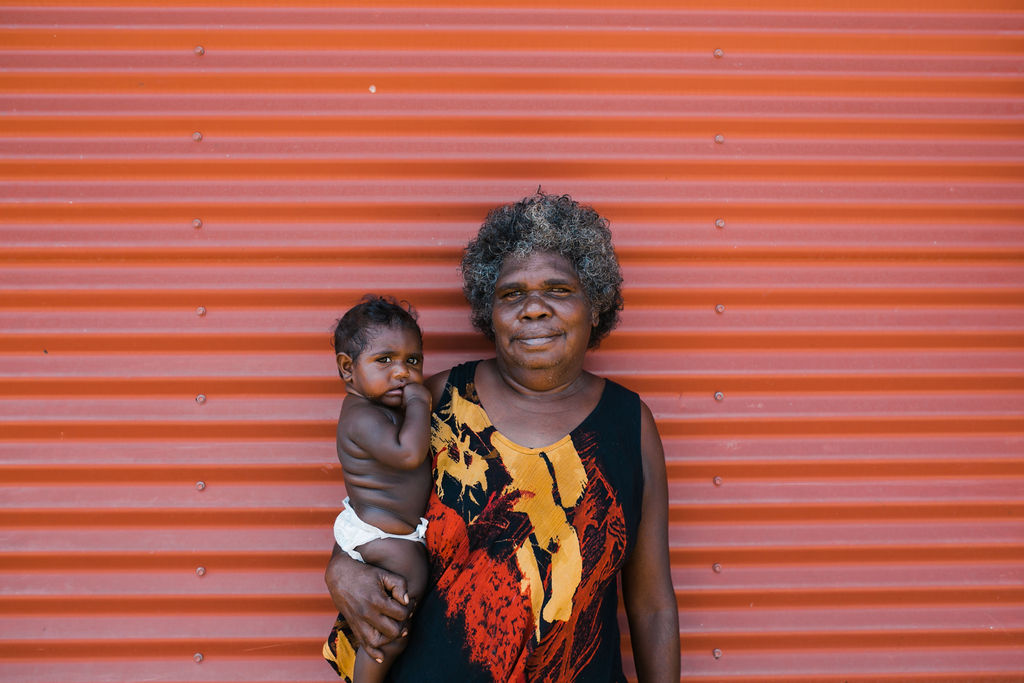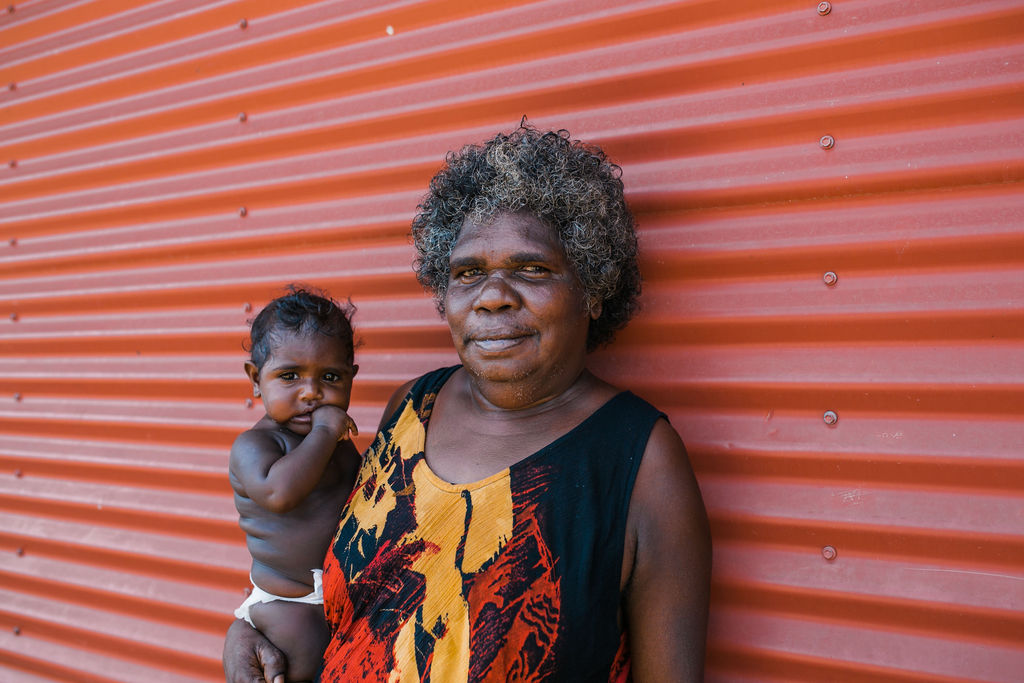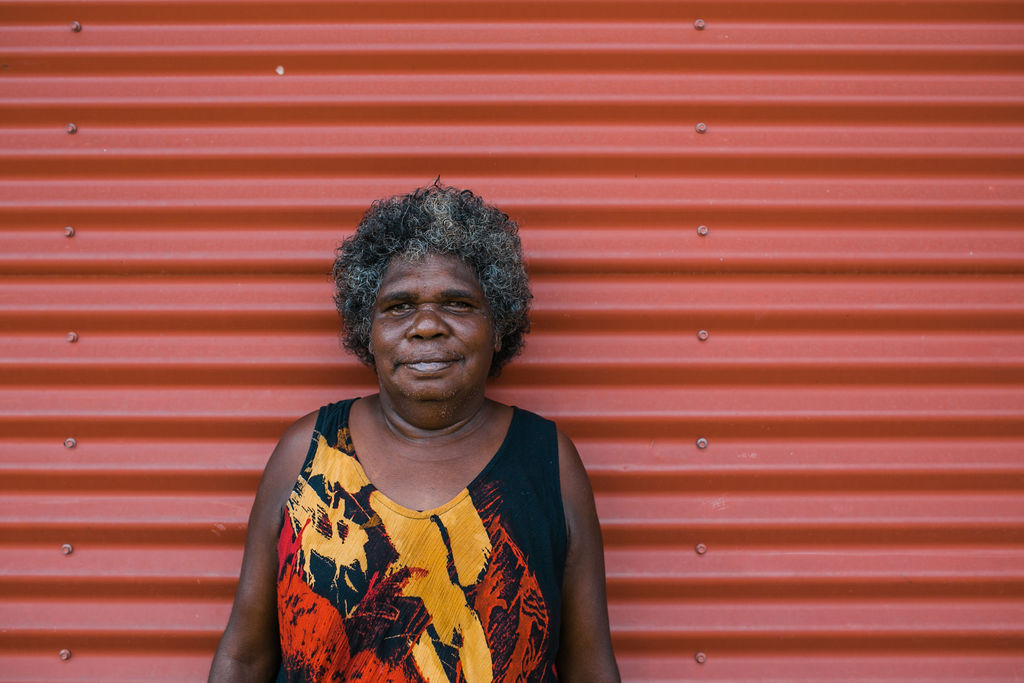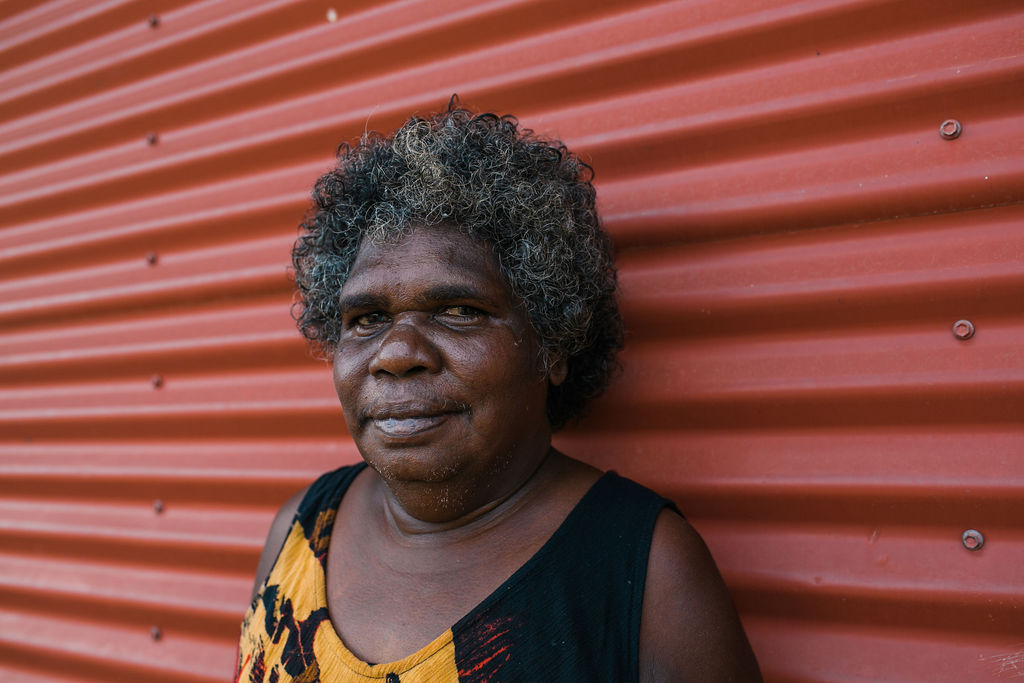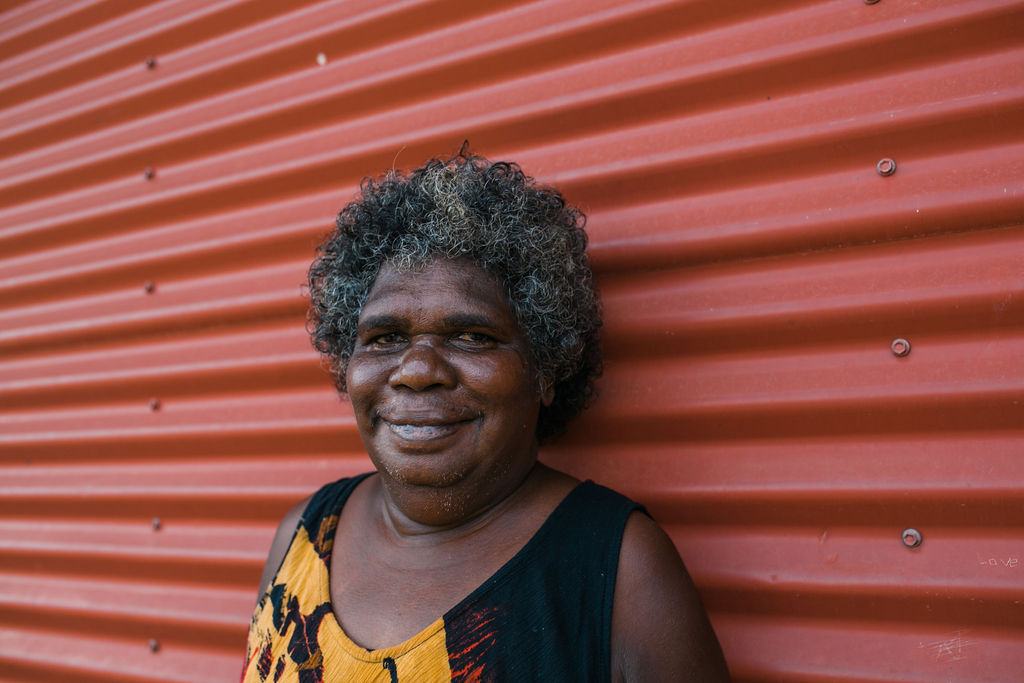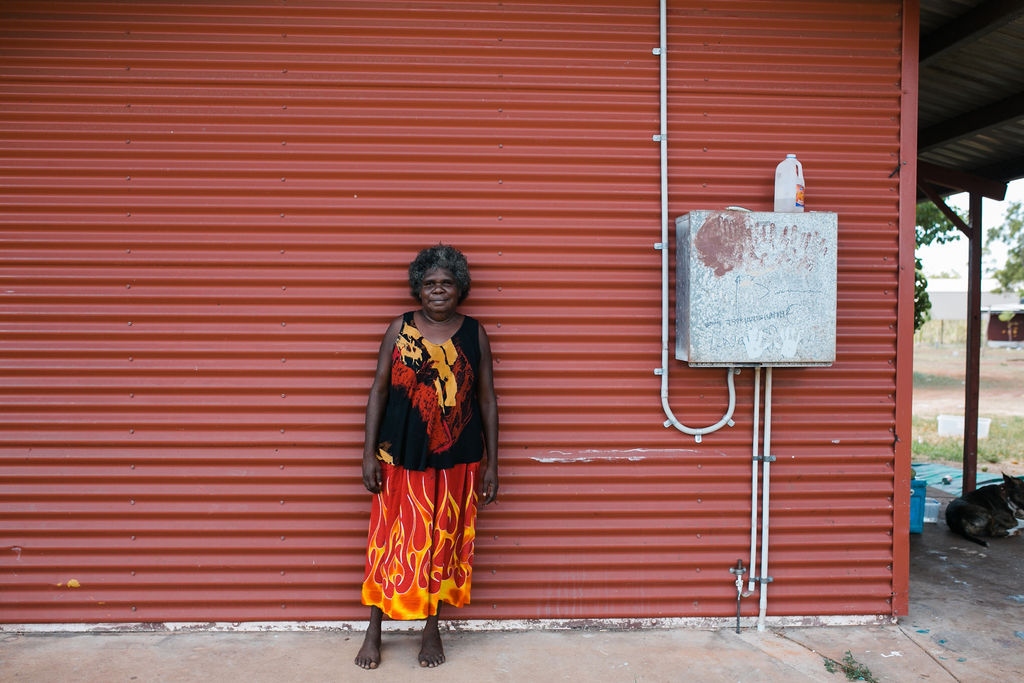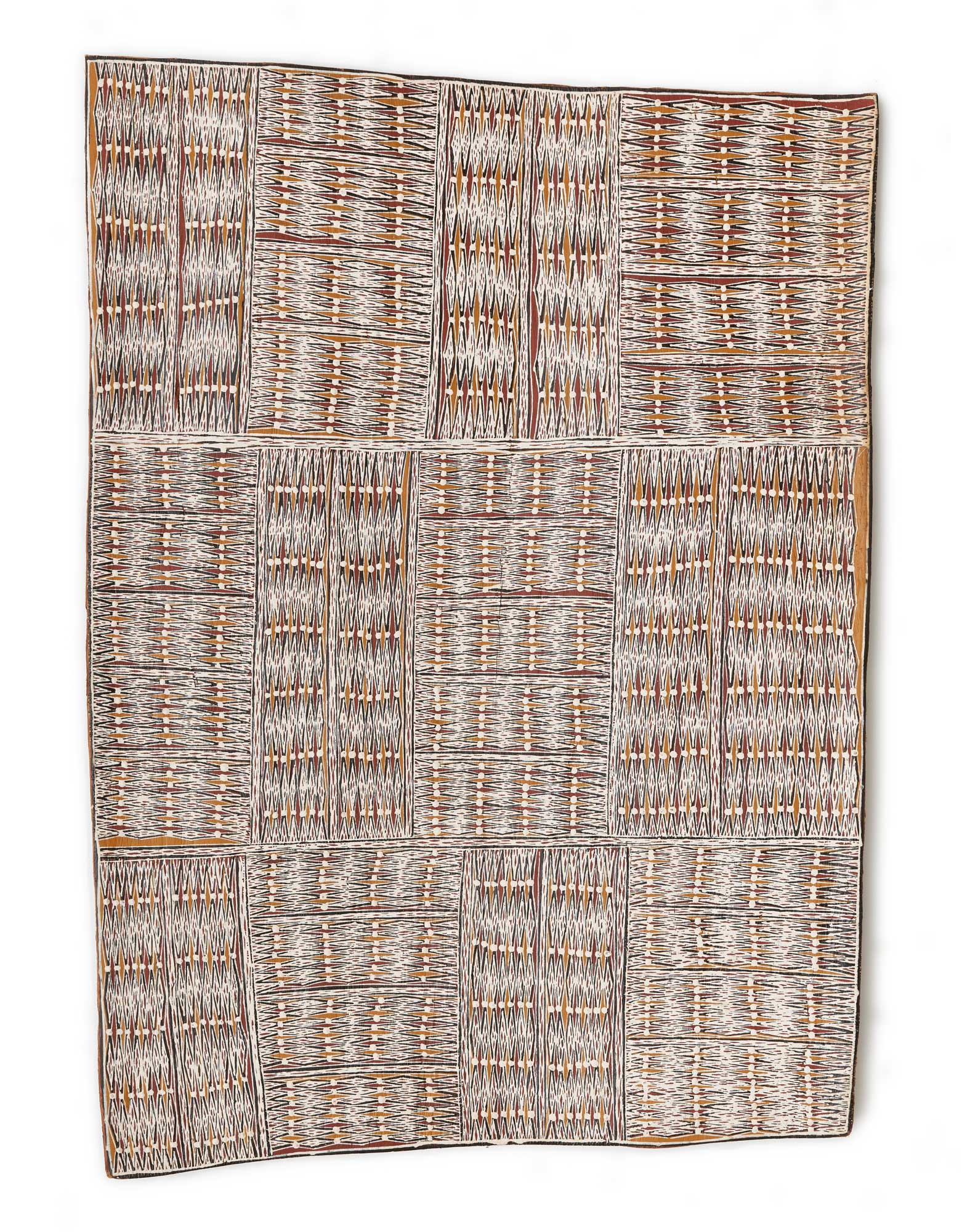
"Yilpara, Bäniyala, and Birany’birany are all connected together, and you can see it in the diamonds that we paint. All Gumatj designs have diamond patterns, but there are lots of different diamonds, from Gäṉgaṉ to Yilpara and Birany’birany and so on.
I paint the small diamonds; this pattern is for the inland areas. The diamonds are the tongues of the fire, and the white dots are the sparks that we see at night, when the fire is burning down. I call those sparks nilŋ’nilŋ. That is my songline, and it connects Gumatj and Maḏarrpa as märi–gutharra (maternal grand-mother and grandchild). And my wife, Rerrkirrwaŋa Munuŋgurr, can paint it because she is a child for Maḏarrpa and Gumatj, like yothu–yindi (child and mother). She is a djuŋgayi (custodian).
"
– YÄLPI YUNUPIŊU
More Info
I painted this with Yälpi’s permission. It is gurtha (fire) that started in my mother’s Maḏarrpa Country. It went from Yilpara to Birany’birany. I have the honor of painting this fire with authority from Yälpi, and I am painting it for our children, to pass it onto the next generation, so that when Yälpi passes, the authority can go to our son.
– RERRKIRRWAŊGA MUNUŊGURR
Rerrkirrwaŋa paints the designs of her husband, Yälpi Yunupiŋu’s Gumatj clan. The significance of fire to the Yunupiŋu family of the Gumatj clan is paramount. It is said that the Gumatj clan language, Dhuwalandja, is itself the tongue of flame. This language, or tongue, like the flame, cuts through all artifice. It incinerates dishonesty leaving only the bones of the truth.
According to Gumatj song, Yirritja leaders first used fire in Gumatj country. This was made possible by the fire spread by Bäru, the ancestral crocodile. The fire affected many of the Gumatj’s sacred totems. For example, Waṉkurra (northern brown bandicoot, Isoodon macrourus macrourus) was forced through a hollow log. With his tail on fire, he traveled through the land and moved Gumatj identity to new places. Many of the creatures like Waṉkurra spread the clan outside of Gumatj country, establishing relationships between the Gumatj and other clans. The diamonds in Rerrkirrwaŋa's painting represents the fire. The colors that the artist has used (red, white, black, and yellow) call to the flames, smoke, charcoal, and dust. The colors also refer to the black skin, yellow fat, white bones, and red blood of the members of the Gumatj clan.
– Buku-Larrŋgay Mulka Centre
Additional Information
Decade
2018
Medium
Natural pigments on eucalyptus bark
Dimensions (IN)
23 13/16 x 16 47/64
Dimensions (CM)
60.5 x 42.5
Credit
Kluge-Ruhe Aboriginal Art Collection of the University of Virginia.
The 2017-19 Kluge-Ruhe Maḏayin Commission. Purchased with funds provided by Terry Snowball and Machel Monenerkit 2021.0007.001
Narrative
Gumatj
The Gumatj are a large clan, with homeland communities at Gunyuŋarra, Birany’birany, Dhanaya, Bawaka, Maṯamaṯa...
Songline
Bäru | The Saltwater Crocodile
During the Waŋgarr (ancestral times), there was a woman named Dhamiḻiŋu. She lived with her...
Location
2010s
The 2010s saw Buku-Larrŋgay Mulka go from strength to strength. At the National Aboriginal and...
About The Artist(s)
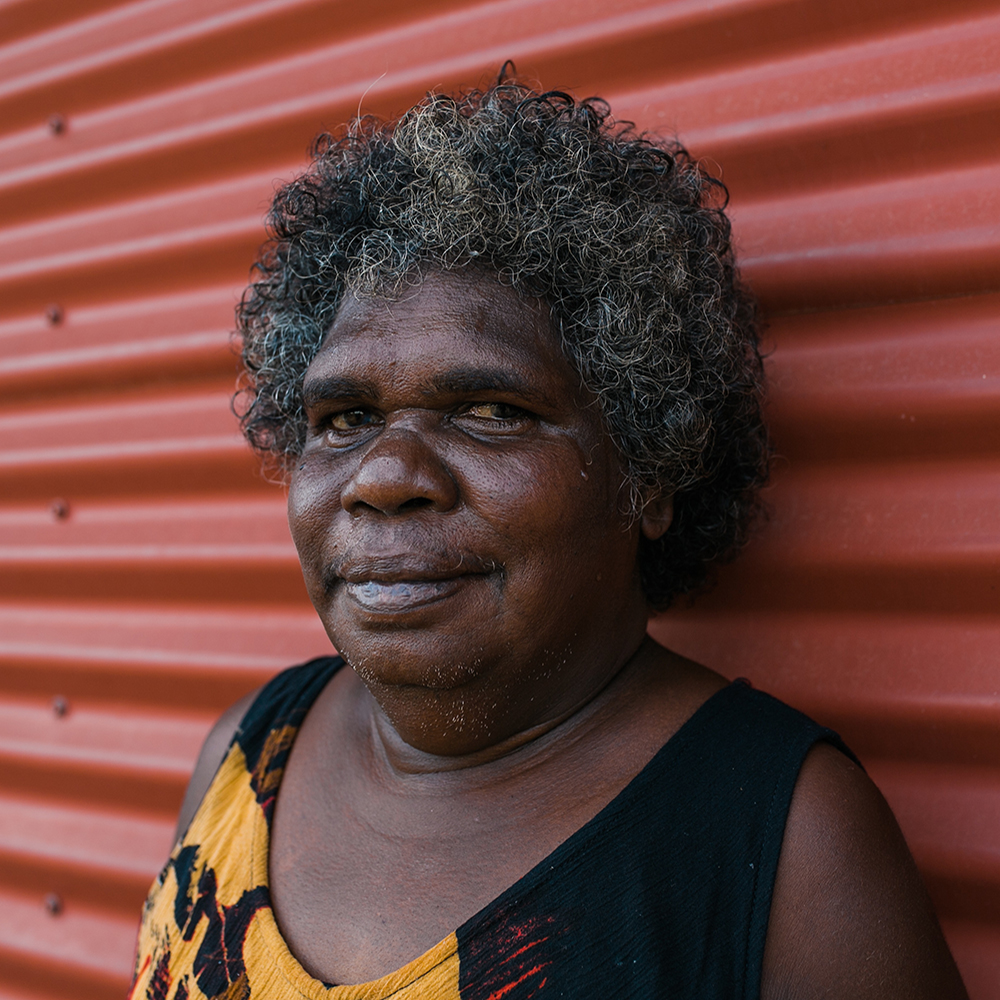
Clan
Gupa-Djapu’
Artist Dates
Born 1971
Rerrkirrwaŋa Munuŋgurr
Rerrkirrwaŋa Munuŋgurr is the daughter of the acclaimed artists Djutjatjutja Munuŋgurr and Noŋgirrŋa Marawili. She paints the designs of both her own Djapu’ clan and her husband Yälpi Yunupiŋu’s Gumatj clan. In 2009, she was awarded the bark painting prize at the National Aboriginal and Torres Strait Islander Art Awards.
Collections Represented
Art Gallery of New South Wales
Australian National Maritime Museum
Charles Darwin University
Kluge-Ruhe Aboriginal Art Collection of the University of Virginia


